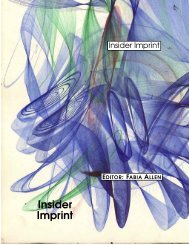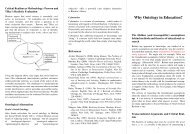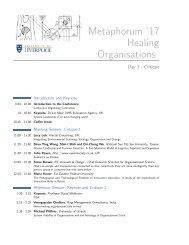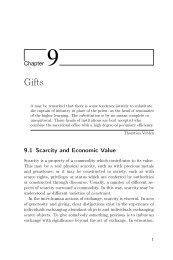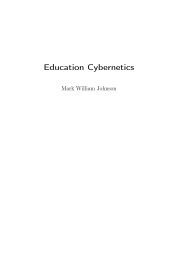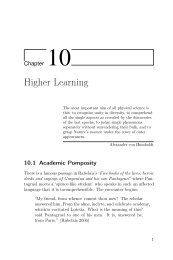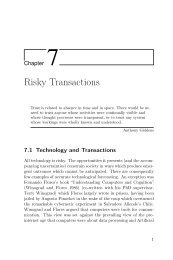culture
Create successful ePaper yourself
Turn your PDF publications into a flip-book with our unique Google optimized e-Paper software.
The Cultural Web<br />
• “A representation of the taken-for-granted<br />
assumptions, or paradigm, of an<br />
organisation and the physical<br />
manifestations of organisational <strong>culture</strong>.”<br />
• Johnson, Scholes and Whittington, p. 201
• Assumptions:<br />
The Cultural Web<br />
Johnson and Scholes, 1992<br />
– Culture is “the way things are done here”<br />
– Training programs, promotion and<br />
assessment reinforce “the way things are<br />
done” and signal what the organisation values<br />
– Indicators: logos, titles, cars<br />
– The formal organisational structures reflect<br />
the power structures and “the way things are<br />
done”
Cultural Web Questions<br />
• What are the Stories?<br />
• What are the Routines and Rituals?<br />
• What Control Systems are in place?<br />
• What Symbols Matter?<br />
• What are the Power Structures?<br />
• What are the Organisational Structures?
The Cultural Web<br />
Power structures<br />
Stories<br />
Symbols<br />
THE<br />
PARADIGM<br />
Routines and Rituals<br />
Organisational Structures<br />
Control systems<br />
Johnson, Scholes and Whittington, Exploring Corporate Strategy, 7th ed., p. 204-205.
Stories<br />
• What core beliefs do stories reflect?<br />
• How pervasive are these beliefs?<br />
• What do they relate to (successes, failures,<br />
strengths, weaknesses)?<br />
• Who are the heroes and villains?<br />
• What norms do the mavericks deviate from?
Control Systems<br />
• What is most closely monitored/controlled?<br />
• Is the emphasis on reward or punishment?<br />
• Are controls related to current histories or<br />
strategies?<br />
• Are there many/few controls?
Routines and Rituals<br />
• Which routines are emphasized?<br />
• Which would be odd if changed?<br />
• What behaviour do routines encourage?<br />
• What are the key rituals?<br />
• What core beliefs do they reflect?<br />
• What do training programmes emphasize?
Symbols<br />
• Are there particular symbols that denote the<br />
organisation?<br />
• What status symbols are there?<br />
• What language and jargon are used?<br />
• What aspects of strategy are highlighted in<br />
publicity?
Power Structures<br />
• How is power distributed within the<br />
organisation?<br />
• What are the core beliefs of leadership?<br />
• How strongly held are these beliefs?<br />
• What are the main blockages to change?
Organisational Structures<br />
• How mechanistic/organic are these<br />
structures?<br />
• How flat/hierarchical are they?<br />
• How formal/informal?<br />
• Do structures encourage competition or<br />
collaboration?<br />
• What types of power structure do they<br />
support?
The benefits of a strong <strong>culture</strong>?<br />
• “Strong <strong>culture</strong> enhances performance in two ways:<br />
First, it energizes employees by appealing to their higher<br />
ideals and values, and by rallying them around a set of<br />
meaningful, unified goals; Second, it boosts performance<br />
by shaping and coordinating employee behaviour.”<br />
» S. Cha and J. Chatman, “Mastering Leadership: Culture of<br />
Growth,” Financial Times, Nov. 2002.








